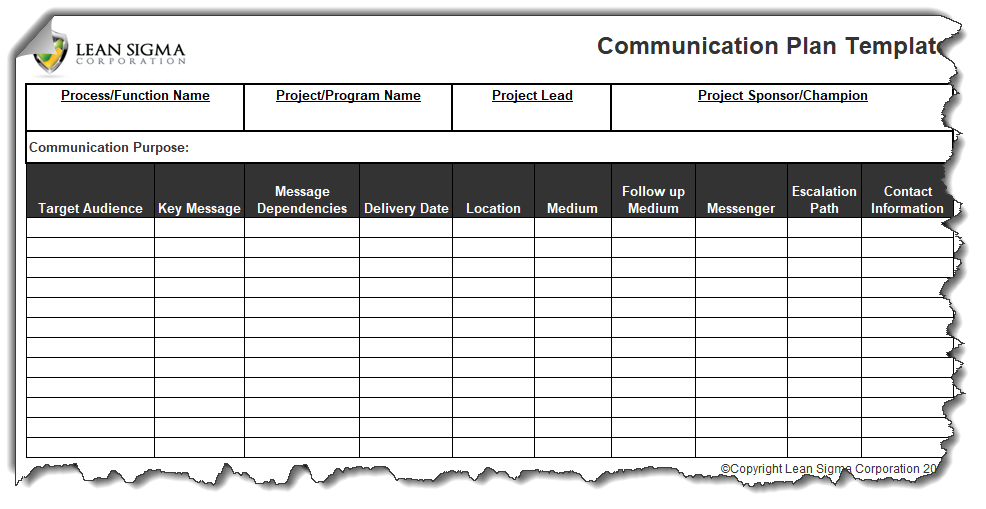The Effective Communication Plan
 An effective communication plan is more vital than you probably give it credit. Nothing takes down a project like a few key "problem children" in the organization (usually middle management), All because you didn't communicate properly or timely or specific enough with them, or didn't engage them in the problem scope and solution implementation, things that should have communication plans built around them. When introducing a Six Sigma project to an organization or a solution implementation, a communication plan is a critical tool.
An effective communication plan is more vital than you probably give it credit. Nothing takes down a project like a few key "problem children" in the organization (usually middle management), All because you didn't communicate properly or timely or specific enough with them, or didn't engage them in the problem scope and solution implementation, things that should have communication plans built around them. When introducing a Six Sigma project to an organization or a solution implementation, a communication plan is a critical tool.
What is an Effective Communication Plan?
A communication plan is a document stating the goal for the project, how to achieve the end result, and a list of objectives, strategies, and procedures. A successful communication plan requires planning and coordination. An external Black Belt professional has the knowledge of process improvement but will need to understand the culture of the company. Brainstorming ideas with employees and staff will help develop a plan. Gaining perspective on the process already in action, gathering information, and putting together an effective communication plan to give everyone an understanding of what the goal is, what steps will be taken, how this process will aid the departments in the short term and the long term benefit for the organization as a whole.
Why use a Communication Plan?
When beginning a Six Sigma process improvement project within a company, everyone in all areas of the organization will need to know what is going on. The project team, support personnel, customer service, and other employees need to hear the objective of the project, how this will benefit the company, what's in it for them, and the effect on their daily work routine. An effective communication plan gives a consistent message for the company, and a positive approach to the question of what the goal is, where changes will be made, and why the current process is being altered.
A Six Sigma project plan can fail without the support and consent of the organization. Building acceptance begins with a solid communication plan. One of the first objectives of the plan would be to explain the Six Sigma process, why it will benefit the company, and explain some of the terminology and the steps to be taken. The "what's in it for me" question should be addressed. A direct and honest approach is an important aspect of an effective communication plan. Being honest and upfront, letting them know there will be bumps in the road and changes to their daily routines. Explaining that these changes will be for the better, job security because the company will become more productive. Happier customers will equal fewer complaints which will require less time troubleshooting and more productivity. Using common phrases and company terminology will show employees that the management understands their job functions. When a well-defined communication plan is delivered the positive energy and support of the staff/employees will make the process improvement transition smoothly.
How to Deliver a Communication Plan?
The leadership team must communicate early and often. The Black Belt lead will create and initiate the communication plan, but as the project moves forward, others will continue to relay information. Communication is not a one-time event. Consistent and ongoing messages will keep everyone informed and on the same page. There are many ways to share a communication plan, and a variety of avenues may be needed to reach all areas of the company. A company-wide Communications meeting and brown bag lunches are ways to interact with the employees and an easier way for questions to be answered. Webinars are useful for employees who work shift hours. Email, the employee phone hotline, and videotaped meetings are great ways to review the process, periodically give updates, and announce project milestones.
The effective communication plan will state the goal and the method of change. Recognizing successful teamwork and sharing the positive impact that has already started will keep the momentum going and aid in achieving the end result together.




